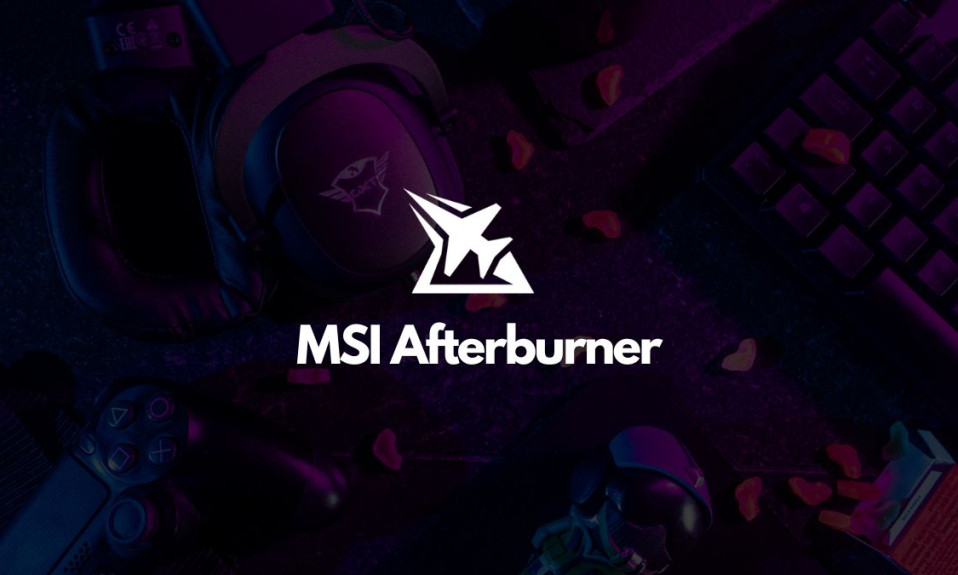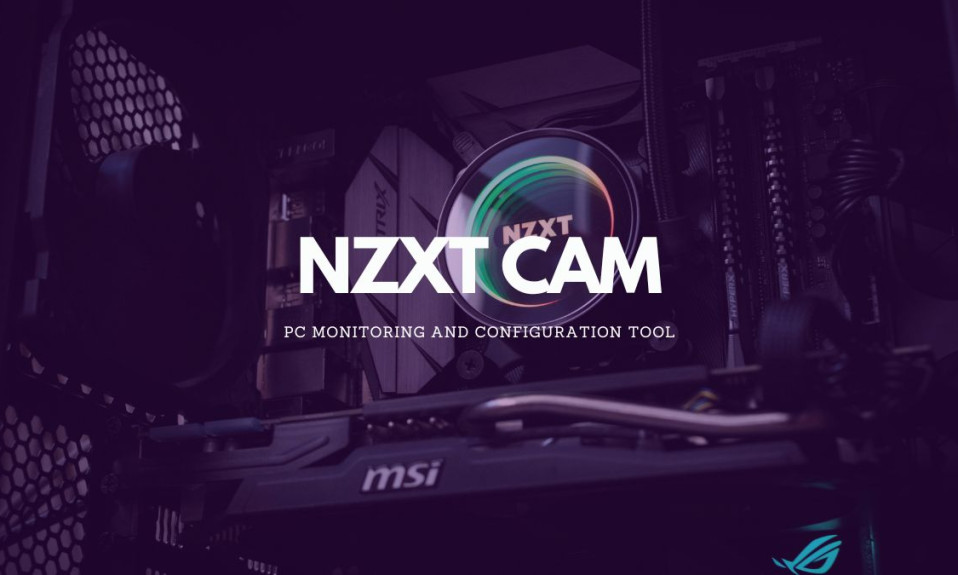
MSI’s renowned Afterburner is a widely recognized GPU overclocking tool. It’s free-to-use software that works for non-MSI graphics cards as well. If you are new to overclocking, you may feel a little overwhelmed getting started with this app.
The following article is an all-encompassing guide to MSI Afterburner that includes a detailed overview, notable features, and the method to download and install the software. Also, if you want to learn how to overclock your GPU using MSI Afterburner, we have it covered.
What is MSI Afterburner?
MSI Afterburner is an overclocking tool that lets you squeeze the extra performance out of your graphics card. You can also use it for other GPU tuning requirements, such as underclocking and undervolting. The best part: you can even overclock non-MSI cards with it and monitor your hardware performance in real time while making changes accordingly.
The prominent overclocking features of MSI Afterburner include GPU core clock, memory clock, temperature, voltage, and fan speed. Using hotkeys, you can save and switch to different profiles with distinct overclock values. This way, you can test your GPU’s capability with different angles. MSI Afterburner comes incorporated with a video capture feature. It lets you record your best gameplay and overclocking performance and share those moments with the world.
Probably the best thing about MSI Afterburner is its newbie-friendly and uncluttered user interface. It’s a safe-to-use tool that has made GPU overclocking a breeze for non-tech-savvy users.
Features
Let’s talk about the notable features MSI Afterburner comes with and how to make the best out of them.
Overclocking
MSI Afterburner comes with a set of tools that simplify the process of exploring and exceeding the upper limits of your graphics card. It lets you overclock the GPU safely and with ease. Using MSI Afterburner, you can access and tweak every aspect of a GPU – clock speeds, core voltage, power limit, temperature limit, memory clock speed, and fan speed.
Overclocking GPU mainly involves altering the clock speed and voltage supply. The system will start producing more heat as you bump up these settings. To dissipate it, you must increase the fan speed. MSI Afterburner allows users to choose a customized fan speed curve that helps fine-tune the fan profiles. Moreover, you can save various overclocking profiles under the software and quickly switch to one another.
OC Scanner: One-Click Overclocking
If the idea of overclocking seems scary, or you think you might end up causing damage to your hardware, the OC scanner feature is a boon for you. It allows you to overlock your GPU in just one click. Yes, you heard it right! OC Scanner is an automated function that uses an algorithm developed by NVIDIA for the RTX 20 series graphics cards. And determines the highest yet most stable overclock settings for the specific graphics card.
You can have the best possible overclocking values for your GPU in a few minutes, which you can apply instantly or tweak around a bit to fine-tune it further. Are you ready to get the free performance gains?
On-Screen Display
This feature shows you real-time information about your system performance based on the changes made in the GPU settings. Using On-Screen Display, you can monitor your GPU temperatures, core and memory clock speeds, voltage, FPS, and usage percentage. It allows you to watch your GPU activity and performance while gaming.
Video Capture
The built-in video-capturing feature makes it fun to record your best performances, share them with friends, and boast. You can capture the best moments from your gameplay and overclocking results without missing a single frame. You can export video footage in different formats, including WMV and AVI, H.264 codec, with various sizes, qualities, and frame rates.
Benchmarking
MSI Afterburner comes with a powerful benchmarking tool known as Kombustor. It stress tests the GPU through a series of intense graphical challenges to determine how the card performs under heavy load. MSI Kombustor is based on the well-known FurMark software and supports cutting-edge 3D APIs such as OpenGL or Vulkan.
If you want to do high-end gaming but aren’t sure how your graphics card may respond to it, simply run stress to find the maximum limits you can push your GPU to.
How to Download and Install MSI Afterburner
- First, download the setup file by hitting the button below.
- Click on “Download Afterburner” and sit back while it downloads.
- Next, unzip the file and run the “MSI Afterburner Setup.”
- Check the box that says “RivaTuner Statistics Server.”
- Simply follow the setup wizard to install the application.
- Upon completion, restart your PC.
And you are ready to unleash the full potential of your GPU using MSI Afterburner.
Understanding MSI Afterburner Layout
The user interface of MSI Afterburner is self-explanatory to a certain extent, so we will not get into heavy details. Below is a quick overview of the functions on the homepage.
At the top, you will find three icons lined up horizontally – K, Help, & Information. K is used to launch Kombustor, the MSI’s stress testing, and benchmarking tool. On pressing Help, you will be redirected to the official Afterburner page. Click on Information to see the specifications of your GPU.
Following are the various GPU settings you get in the middle –
- Core Voltage: is used for providing additional voltage to the GPU. You will find it locked by default as a precautionary measure. Understandably, messing up with this feature may cause hardware damage.
- Power Limit: is used for adjusting the amount of power the card can draw. For best results, slide it to the maximum.
- Temperature Limit: is best used in alignment with the core clock and memory clock. It ensures your GPU doesn’t automatically shut down when the threshold is exceeded.
- Core Clock: This allows you to increase the speed of the GPU chip for better processing power. It’s one of the keys to enhanced performance.
- Memory Clock: This is used to increase the speed of the VRAM, resulting in improved bandwidth – another key factor to achieving higher FPS.
- Fan Speed: comes in handy for adjusting the master GPU fan speed. Experts suggest keeping it on ‘Auto’ mode for favorable results.
Underneath these sliders, you get three icons – Settings, Reset, & Apply. Clicking on the first button opens up an additional window consisting of app settings. As the name implies, the Reset option dismisses the changes made and returns the default GPU settings. Apply is used for saving the new values you have set for your card.
Two big wheels you see on the MSI Afterburner dashboard are the monitoring tools to help you visualize and track your GPU clock, memory clock, voltage, and temperature.
As previously mentioned, MSI Afterburner is an easy-to-use overclocking utility. It won’t take you much time to get the hang of it.
How to Use MSI Afterburner – A Layman Guide to GPU Overclocking
Step 1: Benchmark Your GPU’s Stock Configuration
Before you start tweaking the GPU settings, run a benchmark test to determine your card’s performance at default settings. When you have achieved the highest overclock values for your GPU, you can compare it with the initial score to see how far you have come.
There are a plethora of benchmarking tools available. For this article, we will demonstrate the use of MSI Kombustor, as it comes in-built with the MSI Afterburner app.
How to Use MSI Kombustor?
- Open Afterburner and tap on the “K” icon on the left side.
- If it’s not clickable, you have to download MSI Kombustor separately.
- Next, extract the app from the zip file and double-click to launch it.
- As soon as MSI Kombustor loads up, it will start stress-testing your GPU.
- You can run stress tests at presets such as 1080p, 1440p, etc. Choose the resolution you play most of your games at.
You will see a series of scenes playing on the screen. It may take you a few minutes, and once the benchmark is completed, your graphics card score on the default configuration will be shown. Take note of it, and proceed with the following step.
Step 2: Tweak the Fan Controllers
Open MSI Afterburner, and click on the ‘K’ icon. When Kombustor loads up, click on “Run Stress Test.” Minimize the size of both apps so they can fit side by side on the screen. You can alter GPU settings and subsequently keep an eye on the stress test to analyze how your card responds to the overclock.
Next, move the “Power Limit” and “Temp Limit” sliders to the maximum. For “Fan Speed,” we suggest keeping the percentage between 50 and 100. Crossing the mark of 70 will result in loud fan noises. However, do not get freaked out, as it’s a part of the process.
Before heading to the next step, hit the “Checkmark icon” to save the new settings.
Step 3: Increase Core Clock and Memory Clock
Core Clock and Memory Clock are the key factors to GPU overclocking.
First, increase the Core Clock by 20 MHz and click on the check icon to apply changes. If Kombustor is working fine and there are no glitches on the screen, move the slider to 40 MHz and hit the check button. Check if stress testing is going well. If yes, start making increments of 10 MHz each time until the Kombustor app starts producing visual artifacts. Once it does, know that your GPU has reached the absolute Core Clock limits.
Artifacts simply mean that you have clocked your GPU quite high. Therefore, you must lower it to find a stable core clock. You can either decrease the setting by 10-15 MHz or set it to the last stable speed.
Next, start incrementing the Memory Clock by 10 MHz. Repeat the process until Kombustor starts crashing down. After hitting the limits, underclock the setting by 5 MHz or roll back to the last stable speed.
Once you have found the highest yet stable overclock settings for both the Core Clock and Memory Clock, let the Kombustor app run for a while to ensure the card is handling the newly obtained values well. Lastly, save the settings as Preset 1.
Frequently Asked Questions
Q. Is MSI Afterburner safe?
Yes, it’s a reliable utility trusted worldwide by professional overclockers.
Q. How to achieve the best overclock settings?
Effective overclocking is about finding a balance/stability between high clock speed and temperature.
Q. How impactful is MSI Afterburner?
MSI Afterburner is as efficient as any other overclocking tool on the market.
Conclusion
So that is it for this article. Now, you have all the information you need to take the first step to master MSI Afterburner. Use this fantastic tool to tweak, monitor, and optimize your GPU in real time and unleash your card’s power beyond the manufacturer’s specifications.




